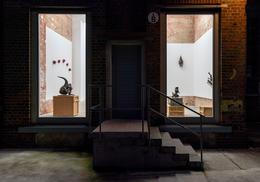
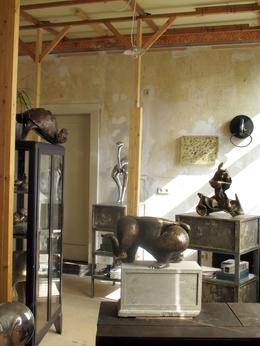
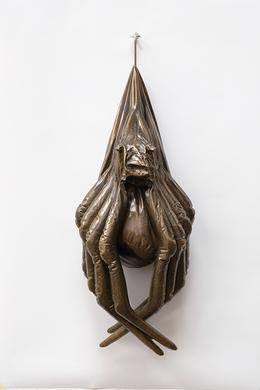
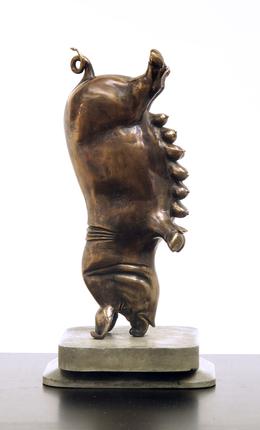
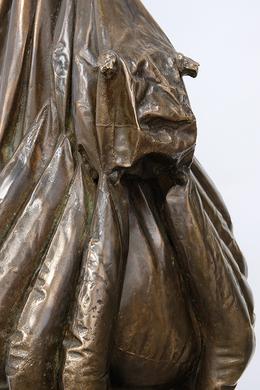
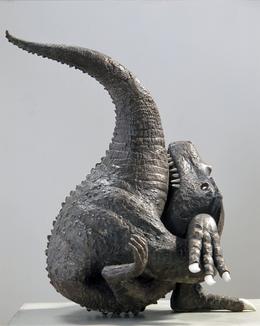
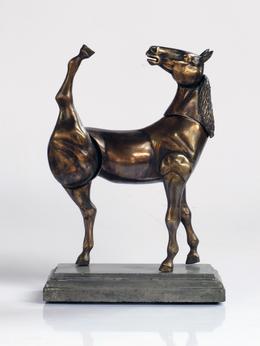
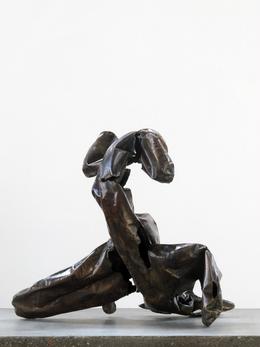
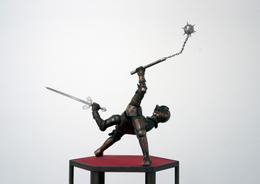
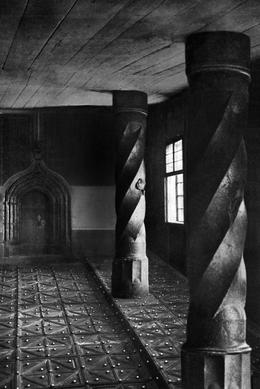
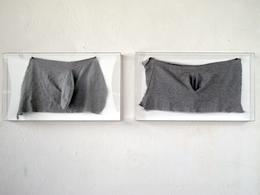
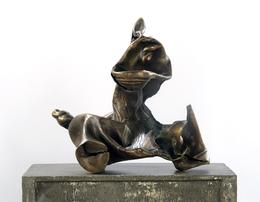
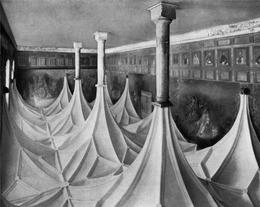
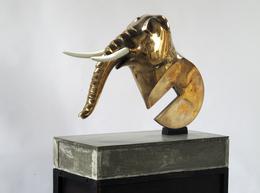
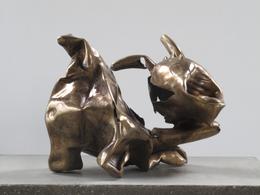
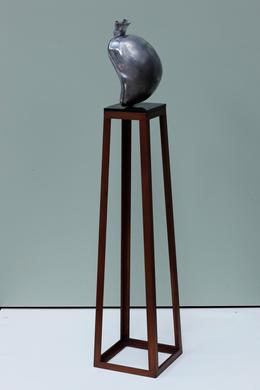
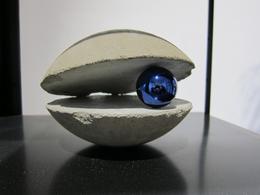
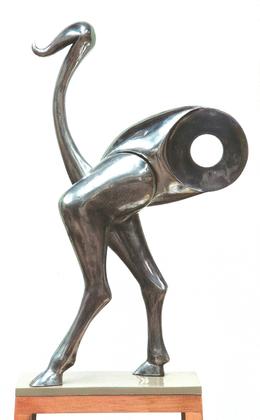
Andreas Grahl info
The sculptures by Andreas Grahl can be viewed as both: the great fascination of the bronze figure as testimony of past cultures with their unexplained, mysterious and dignified aura – and the interplay between the present possibilities that material and production methods can offer the artist today.
The small sculptures of the Renaissance and the way they were created under technical difficulties, along with their progressive ideas and sculptural production are the reasons behind the works of Andreas Grahl; but not their role models.
Objective starting points are among the u.a Ready-mades mundane nature.
First of all, children’s connectable toy figurines are based on the simple principle that prefabricated parts can produce lasting connections and can form a defined whole. The fact that variations of these connections can lead to alternative possibilities and different versions of the original figure is the core of Grahl’s approach.
Through the use of one of the oldest materials – Bronze, which not only provides a great freedom in shaping and moulding but also in the assertion of the value and manifestation of bronze figures of the world – is also present in Grahl’s contemporary works.
Variations in size that have not been technically altered until today are the choice of as Grahl’s figures; they are up to 70cm in height. When viewing the sculptures fine detail, the sensual and thematic potential of Grahl’s method is different in every sculpture.
»Janus«, the two-faced, Roman god of the beginning and the end, is an orangutan, a creature of two heads, standing on two hands – Grahl can formulate the tension in his thinking and action between two opposing directions as hostile competing impulses.
The »Pferd« (»Horse«) with a leg that has grown upwards but cannot move – can it still be considered a horse in this condition? And above all, when can an image work against our imagination? And, to what degree of change are we willing to consider a horse no longer as a horse?
Even beyond the animals, the absurd deformations are much more than a gimmick of experimental principle. A »Krieger« (»Warrior«) is seen struggling with four arms and heads whilst balancing on his chest – he is already fighting the vain within himself.
In another series of work, inflatable figures are used as representative examples.
Grahl reaches the expectation of perfection and delves underneath it and finds a form of language that runs parallel to the correct execution – Grahl captures the object in its deflated state, its openings are rigid from the sturdiness of the bronze – thus he transforms it into its opposite condition.
The deliberate abolition of the development to perfection – as it should be in bronze sculptures – poses many questions on the demands of seeing and recognizing unintended states of change. Grahl asserts that the unthinkable can be made possible and relies on the familiarity of the bronze material.
The small sculptures of the Renaissance and the way they were created under technical difficulties, along with their progressive ideas and sculptural production are the reasons behind the works of Andreas Grahl; but not their role models.
Objective starting points are among the u.a Ready-mades mundane nature.
First of all, children’s connectable toy figurines are based on the simple principle that prefabricated parts can produce lasting connections and can form a defined whole. The fact that variations of these connections can lead to alternative possibilities and different versions of the original figure is the core of Grahl’s approach.
Through the use of one of the oldest materials – Bronze, which not only provides a great freedom in shaping and moulding but also in the assertion of the value and manifestation of bronze figures of the world – is also present in Grahl’s contemporary works.
Variations in size that have not been technically altered until today are the choice of as Grahl’s figures; they are up to 70cm in height. When viewing the sculptures fine detail, the sensual and thematic potential of Grahl’s method is different in every sculpture.
»Janus«, the two-faced, Roman god of the beginning and the end, is an orangutan, a creature of two heads, standing on two hands – Grahl can formulate the tension in his thinking and action between two opposing directions as hostile competing impulses.
The »Pferd« (»Horse«) with a leg that has grown upwards but cannot move – can it still be considered a horse in this condition? And above all, when can an image work against our imagination? And, to what degree of change are we willing to consider a horse no longer as a horse?
Even beyond the animals, the absurd deformations are much more than a gimmick of experimental principle. A »Krieger« (»Warrior«) is seen struggling with four arms and heads whilst balancing on his chest – he is already fighting the vain within himself.
In another series of work, inflatable figures are used as representative examples.
Grahl reaches the expectation of perfection and delves underneath it and finds a form of language that runs parallel to the correct execution – Grahl captures the object in its deflated state, its openings are rigid from the sturdiness of the bronze – thus he transforms it into its opposite condition.
The deliberate abolition of the development to perfection – as it should be in bronze sculptures – poses many questions on the demands of seeing and recognizing unintended states of change. Grahl asserts that the unthinkable can be made possible and relies on the familiarity of the bronze material.
Andreas Grahl bio
1964
born in Berlin
1989
apprenticeship in photography
1992 - 1999
studies photography under supervision of Prof. Astrid Klein at Academy of Visual Arts. Leipzig
2001
diploma
2003 - 2004
studies at ISA in Havanna. Cuba
2006 - 2011
artistic assistant at the Academy of Visual Arts. Leipzig
Andreas Grahl lives and works in Leipzig.
born in Berlin
1989
apprenticeship in photography
1992 - 1999
studies photography under supervision of Prof. Astrid Klein at Academy of Visual Arts. Leipzig
2001
diploma
2003 - 2004
studies at ISA in Havanna. Cuba
2006 - 2011
artistic assistant at the Academy of Visual Arts. Leipzig
Andreas Grahl lives and works in Leipzig.
